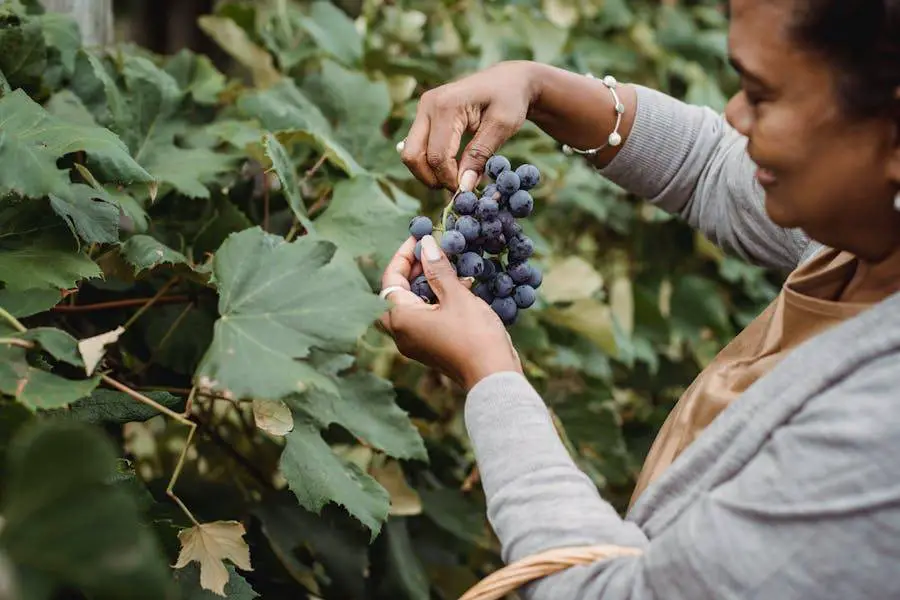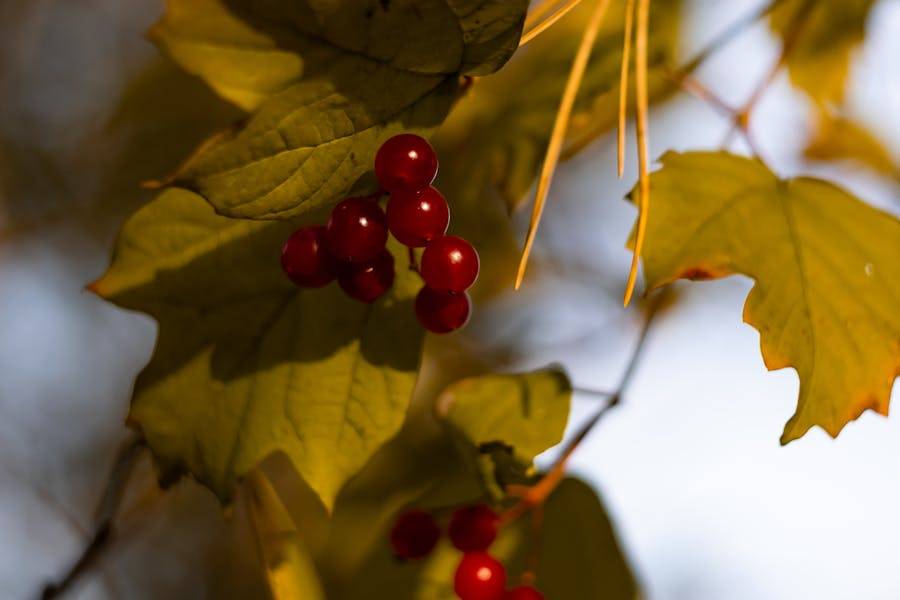Table of Contents
For homestead owners, the decision to cultivate or control plant species like moonseed and wild grape is crucial due to their impact on the landscape, wildlife, and human safety.

This article delves into a comprehensive comparison of moonseed and wild grape, focusing on identifying features, toxicity, growth and cultivation, harvesting, wildlife impact, control measures, and ecological considerations.
Identifying Features
Leaf Shape and Texture
Moonseed leaves are typically heart-shaped with a smooth texture, presenting a glossy appearance that can be deceivingly similar to the wild grape.
Conversely, wild grape leaves are more lobed or toothed, with a rougher texture. This distinction is vital for homestead owners to accurately identify and manage these plants.
Fruit Appearance
The fruits of moonseed and wild grape are easily confused at a glance.
Moonseed produces small, dark berries with a single, crescent-shaped seed inside, while wild grapes bear clusters of berries, each containing round seeds.
The visual similarities necessitate a closer inspection to avoid mistaking the toxic moonseed for the edible wild grape.
Toxicity and Safety
Toxic Compounds Present
Moonseed contains toxic alkaloids, specifically dauricine, which can be lethal if ingested by humans or animals.
On the other hand, wild grapes are generally safe to eat, though the seeds, stems, and leaves contain compounds that can be mildly toxic in large quantities.
Safety Measures for Homesteaders
To ensure safety, homestead owners should educate themselves and their families about these plants.
Clear labeling and physical barriers can help prevent accidental ingestion of moonseed. In case of uncertainty, consulting with a local extension office or a botanist before consuming any wild fruits is advisable.
Growth and Cultivation
Preferred Growing Conditions
Moonseed thrives in shaded or semi-shaded areas, often near water bodies, and prefers moist, well-drained soil.
Wild grape vines favor sunlight but can tolerate partial shade, growing vigorously on fences, trees, and other structures.
Understanding these preferences helps homestead owners manage or encourage growth effectively.
Cultivation Techniques
For those looking to cultivate wild grapes, training the vines on trellises and regular pruning promotes healthier growth and better fruit production.
In contrast, moonseed, due to its toxicity, is rarely cultivated intentionally and is often removed when identified.
Harvesting and Usage

Optimal Harvesting Time
Moonseed berries mature in late summer to early fall but are not harvested due to their toxicity.
Wild grapes, however, are best harvested in the fall when they are fully ripe, as indicated by their deep purple color and slightly wrinkled skin.
Uses in the Homestead
While moonseed has no safe uses in the homestead, wild grapes can be used to make jams, jellies, wines, and juices.
Their leaves are also edible when cooked and can be used similarly to grape leaves in culinary applications.
Wildlife Impact
Attractiveness to Wildlife
Both moonseed and wild grape are attractive to wildlife. Birds, in particular, feed on the fruits of both plants.
However, while wild grapes provide a nutritious food source, moonseed can be toxic to certain animals, though many seem to tolerate it.
Potential Risks to Fauna
Homestead owners should be aware of the potential risks moonseed poses to domestic pets and livestock, as accidental ingestion can lead to poisoning.
Meanwhile, wild grapes serve as a beneficial addition to wildlife habitats, offering both food and shelter.
Control and Management
Natural Predators and Control Methods
There are few natural predators for moonseed and wild grape, making manual removal and management necessary. Regular monitoring and removal of new growth can help control their spread.
Chemical and Physical Removal Strategies
For extensive infestations, chemical herbicides may be employed, though care must be taken to avoid harming desired plants and the surrounding ecosystem.
Physical removal, including digging out the roots, is effective but labor-intensive.
Ecological Considerations
Invasiveness and Spread
Moonseed can be invasive in certain areas, outcompeting native plants and altering habitats. Wild grape, while less frequently invasive, can overwhelm and damage trees and structures if left unchecked.
Impact on Local Ecosystems
Both plants can significantly impact local ecosystems. Homestead owners should consider their ecological role and manage them responsibly, promoting biodiversity and maintaining balance in their landscapes.
Pollination and Reproduction

Moonseed plants are dioecious, meaning individual plants are either male or female. For fruit production, both sexes must be present in the vicinity to ensure cross-pollination.
The plant relies on insects and wind to aid in this process, which can limit its spread if one gender is absent.
Wild grapevines are typically hermaphroditic, containing both male and female reproductive structures within the same flower, which allows a single vine to produce fruit through self-pollination or with the help of pollinators like bees.
This trait contributes to the wild grape’s robustness and ability to proliferate in various conditions.
Medicinal and Herbal Uses
Despite its toxicity, some traditional practices have utilized moonseed in very controlled and minimal quantities for medicinal purposes.
However, due to the high risk of poisoning, its use is highly discouraged without the guidance of a professional herbalist or medical practitioner.
The leaves, seeds, and skin of wild grapes contain antioxidants, such as resveratrol, which have been linked to health benefits, including heart health and anti-inflammatory properties.
Herbalists may use parts of the wild grape plant in teas, extracts, and other formulations to harness these benefits, making it a valuable plant for both culinary and medicinal purposes on the homestead.
Economic Impact
Moonseed does not generally have a significant economic impact due to its toxicity and the caution required in handling it.
Its presence is more often considered a liability than an asset, leading to efforts focused on eradication rather than utilization.
In contrast, wild grape can have a positive economic impact, especially for homesteads interested in producing homemade wines, jellies, and other grape-derived products.
With proper management, wild grape vines can yield substantial crops that can be used for personal consumption or as a source of income, adding value to the homestead.
Conclusion
Understanding the differences between moonseed and wild grape is crucial for homestead owners, not only for the safety and well-being of their families but also for the health of their land and local wildlife.
By recognizing and respecting the unique characteristics and impacts of these plants, homesteaders can make informed decisions that benefit their environment and community.








